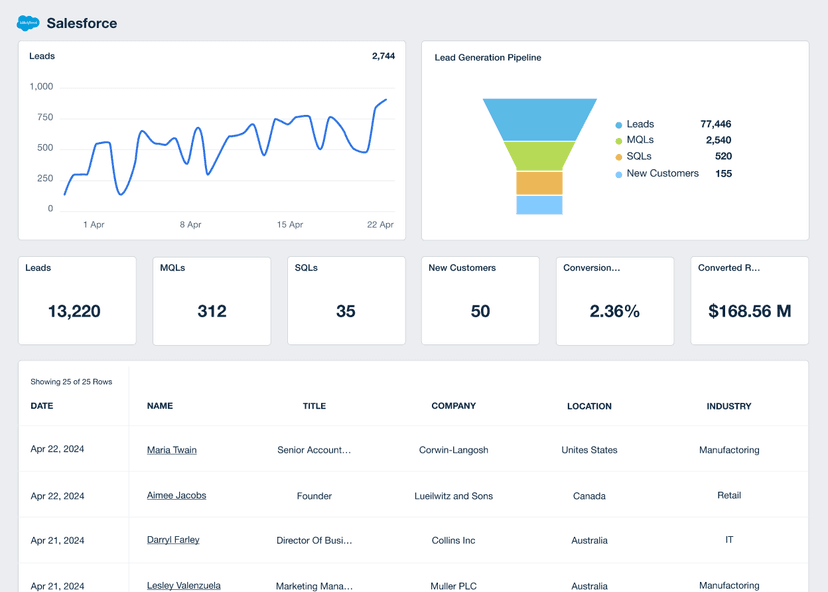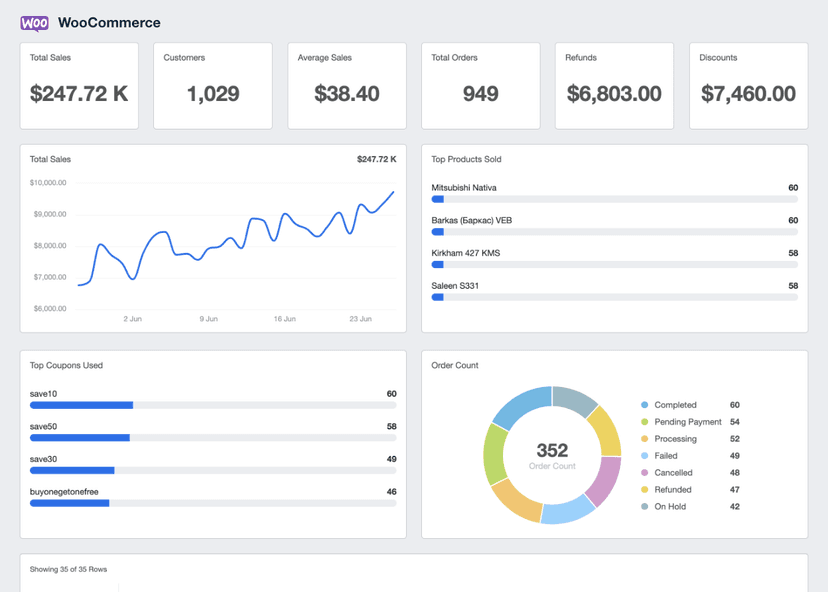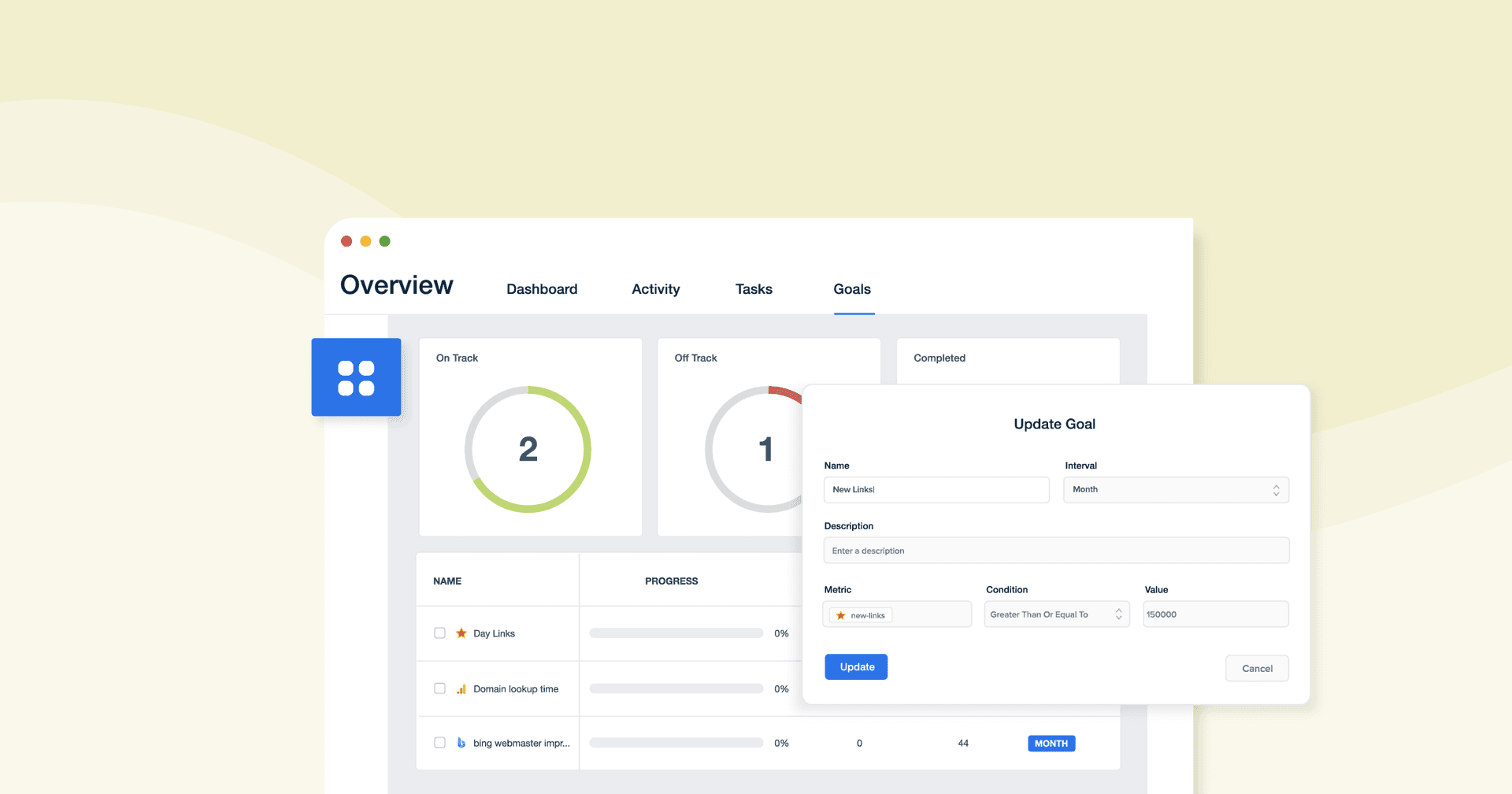Gross Sales
Monitor Revenue Growth
Track Gross Sales over time to measure revenue performance trends.
Identify Sales Trends
Analyze Gross Sales to understand peak and low-demand periods.
Evaluate Campaign Impact
Assess how marketing initiatives influence the Gross Sales figure.
Highlight Value
Showcase Gross Sales in reports to emphasize ROI contributions.
The Importance of Gross Sales
Gross Sales provide an unfiltered view of a company’s total revenue, serving as a baseline for evaluating the overall financial health and sales effectiveness. Gross Sales refer to the entirety of sales transactions within a specified period, making it vital for identifying revenue trends and forecasting.
Gross Sales act as the starting point for financial metrics like Net Sales and Net Income, which provide deeper insights into a company's profitability. By tracking Gross Sales, businesses understand the full scope of their revenue generation efforts before deductions like sales discounts and returns. Gaining this clarity helps pinpoint areas for growth, set realistic goals, and assess market demand for specific products or services.
Stop Wasting Time on Manual Reports... Get Ecommerce Insights Faster With AgencyAnalytics
How Gross Sales Relates To Other KPIs
Gross Sales connect directly with other financial KPIs like Net Sales and Gross Profit, creating a more comprehensive view of a business's financial performance. While Gross Sales highlights total revenue before deductions, Net Sales adjusts this figure to reflect the actual revenue after discounts, returns, and allowances. (To calculate Net Sales, subtract deductions like sales allowances, returns, and discounts from the company's Gross Sales. The Net Sales formula refines Gross Sales to represent actual revenue.)
Gross Profit further refines this analysis by subtracting the Cost of Goods Sold (COGS), providing insight into profitability. Together, these KPIs paint a clear picture of revenue flow, operational efficiency, and market success.
Key Factors That Impact Gross Sales
Several factors influence Gross Sales, including pricing strategies, product quality, and market demand. Higher prices or innovative offerings may drive Gross Sales, but poor product quality or low customer satisfaction will diminish them through returns or reduced repeat purchases.
Sales promotions, such as discounts or early payment incentives, may boost sales volumes but may impact Net Revenue calculations. External factors like economic conditions and competitor actions also play a significant role in shaping Gross Sales performance. Understanding these variables is essential for accurately forecasting and improving this metric.
KPIs allow us, as an agency, to demonstrate our value to the client. Ultimately, what is their ROI from our efforts? When you can clearly demonstrate this month over month, it increases your retention rate and keeps clients paying you month after month.
How To Calculate Gross Sales
Gross Sales represent total revenue, calculated before deductions like sales allowances or returns. For further accuracy, Net Sales reflect the company's Gross Sales minus such deductions. Calculating Gross Sales involves summing up all revenue generated from the sale of goods or services before accounting for any deductions.
Gross Sales Formula Example
What Is a Good Average Gross Sales?
Good Gross Sales figures vary by industry but typically indicate strong sales transactions with minimal deductions. For retail, a steady increase in Gross Sales revenue over quarters often reflects healthy market demand and successful pricing strategies.
What Is a Bad Average Gross Sales?
Low Gross Sales, especially when coupled with high sales deductions such as returns and allowances, may signal poor product-market fit, inadequate pricing, or inefficient sales processes. Consistent declines over time are a red flag for operational or market issues.
How To Set Gross Sales Benchmarks and Goals
If no standard benchmark exists for a specific industry, historical sales data, and forecasting should guide the evaluation. For example, calculating the required Gross Sales to achieve a Gross Profit Margin target will help define actionable goals. Analyze trends across a company’s income statement and Total Sales revenue to tailor benchmarks that align with business objectives.
Why Gross Sales Matters to Clients
Clients value Gross Sales as a straightforward measure of the total revenue generated from sales transactions, which directly reflects business growth and market appeal. Gross Sales provide a high-level overview of revenue potential, helping stakeholders identify trends and evaluate sales strategies. Gross Sales figures are essential for ensuring that the sales team and product offerings align with the market’s expectations.
Why Gross Sales Matters to Agencies
For agencies, Gross Sales act as a foundational metric to assess the success of campaigns and strategies. By analyzing Gross Sales, agencies gauge whether marketing efforts are effectively driving revenue. It also helps determine the ROI of initiatives and informs adjustments in the sales process, such as improving customer acquisition strategies or refining pricing models. Understanding Gross Sales empowers agencies to align their efforts with client revenue goals.
Add transparency and personalized marketing insights to your client reporting.
Best Practices When Analyzing and Reporting on Gross Sales
Analyzing Gross Sales is key to understanding a business's financial health and ensuring accurate reporting. Evaluating Gross and Net Sales, calculating Net Sales, and tracking financial data over time highlight trends, uncover inefficiencies, and drive more effective decision-making.
Ensure Data Accuracy
Verify Gross Sales figures by reconciling sales receipts and invoices with the company's sales account and financial statements. Avoid misleading figures by accounting for sales returns, sales allowances, and discounts.
Analyze Over Time
Plot Gross Sales and Net Sales across the same period to evaluate long-term performance. Include data like Gross Sales minus deductions for partial refunds and early payment discounts to identify revenue patterns.
Compare Across Channels and Campaigns
Analyze Gross Sales price, revenue generated, and services sold by channel. Identify how different strategies impact Gross and Net Sales to fine-tune campaigns and forecasting models.
Put in Context
Relate Gross Sales to broader financial data, such as cash flow, direct costs, and accrued expenses. Compare the difference between Net and Gross Sales to refine strategies for the buyer pays model and services pricing.
Align to Client Goals
By showing how Gross Sales align with goals, clients gain confidence in strategies aimed at boosting total revenue and minimizing expenses. For example, relate Gross Sales minus sales deductions to targets like expanding market share or improving cash flow.
Visualize Performance
Use intuitive dashboards to present Gross Sales and Net Sales figures. Highlight metrics like Gross Sales minus allowances and sales discounts over the same period to avoid misleading figures.
With custom reports, we can zoom in on the key performance indicators and metrics that matter most to our clients, making our reporting experience incredibly valuable and directly relevant to their success.
Shopify Dashboard Example

Related Integrations
How To Improve Gross Sales
Improving Gross Sales involves refining sales strategies, reducing inefficiencies, and leveraging financial data. Here are actionable tips to enhance a business’s Gross Sales while aligning efforts with revenue goals.
Optimize Pricing Strategy
Review price regularly and adjust based on market demand, competitor analysis, and customer feedback to maximize revenue without sacrificing volume.
Minimize Sales Deductions
Improve product quality and address minor product defects to track and reduce sales returns, allowances, and discounts.
Enhance Team Performance
Train sales teams to focus on high-conversion opportunities and cross-selling techniques, and use Gross Sales metrics to reward top performers.
Related Blog Posts
See how 7,000+ marketing agencies help clients win
Free 14-day trial. No credit card required.
















